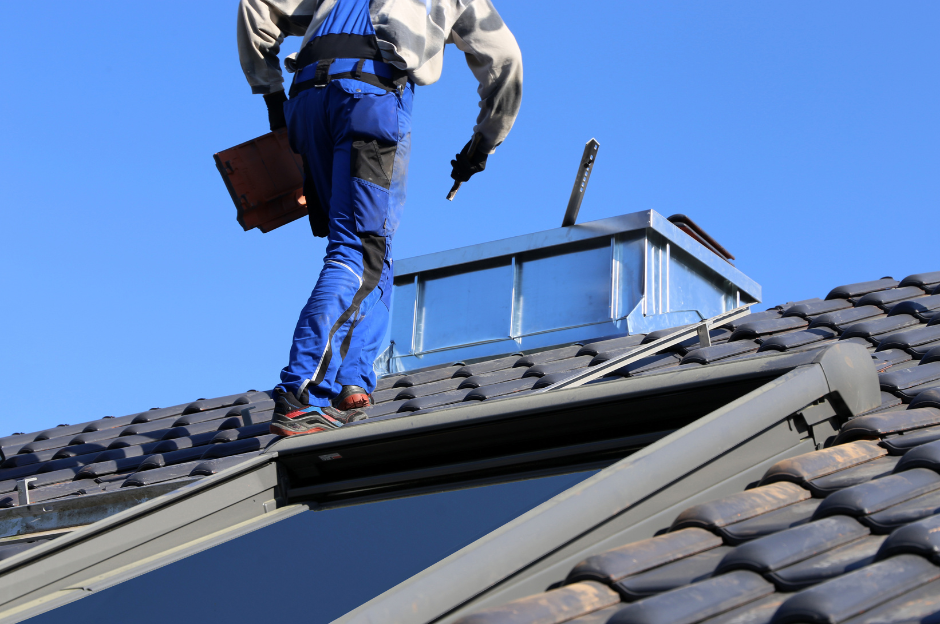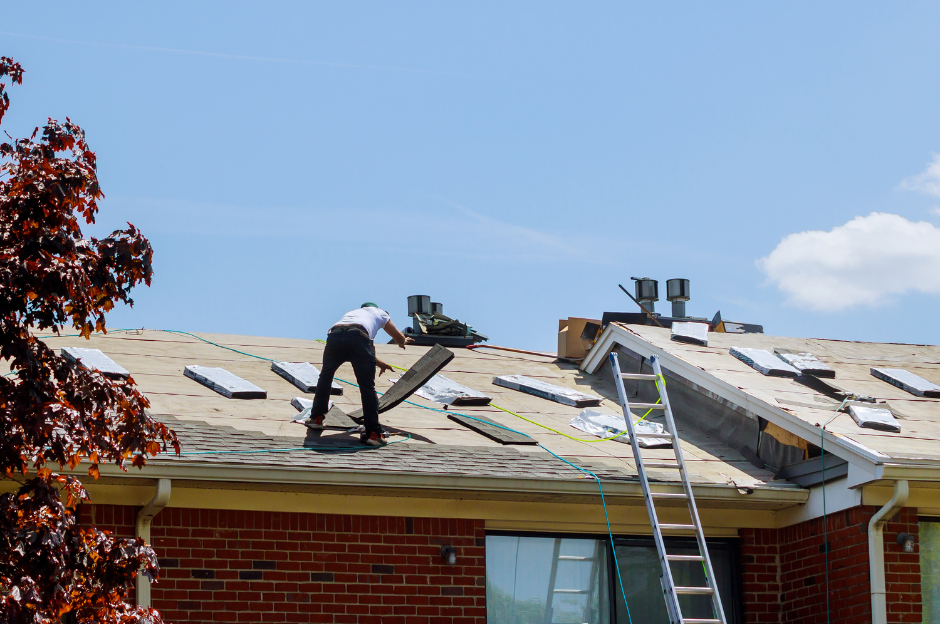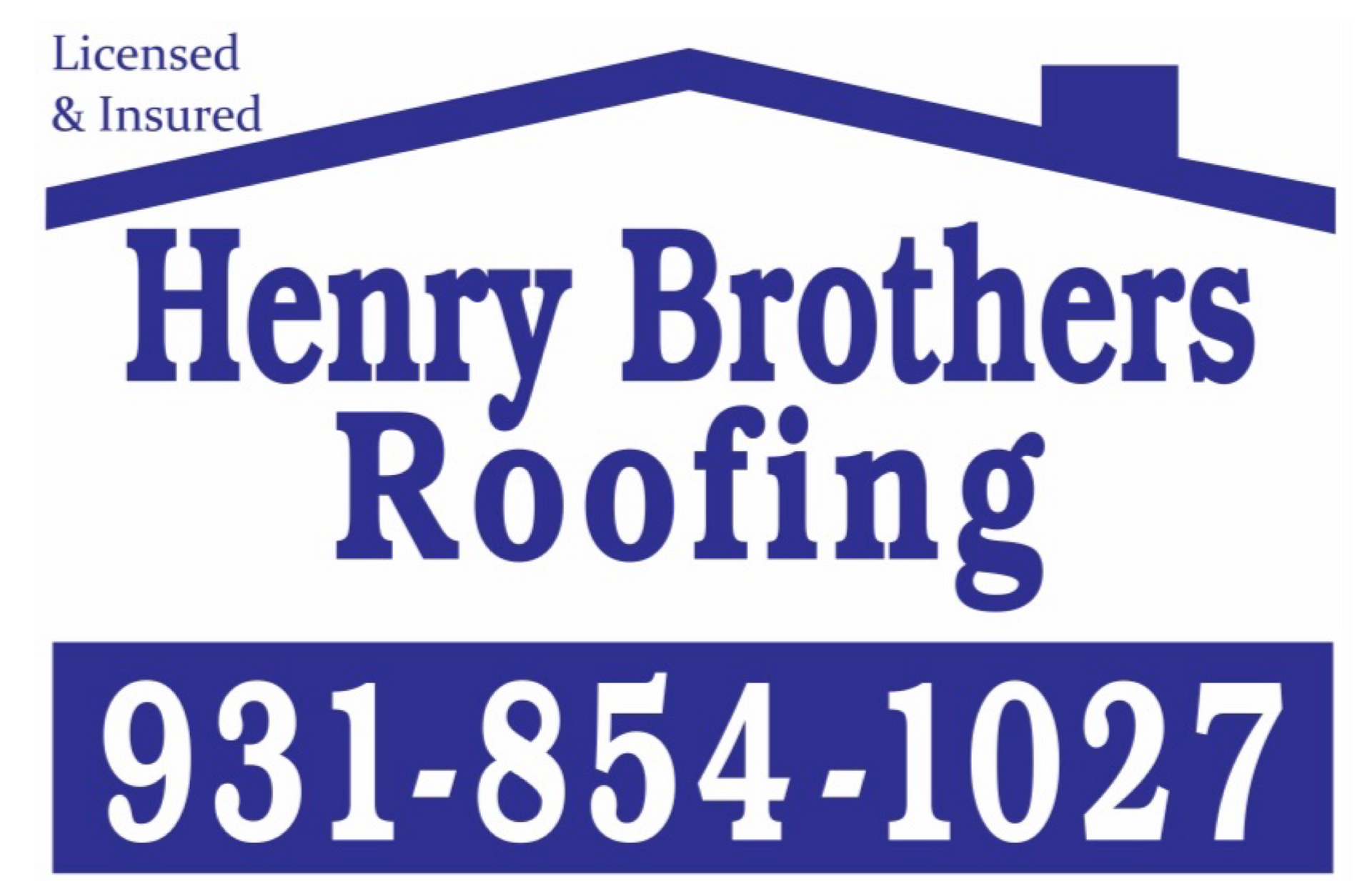Protecting Your Family: Safe Roofing Solutions for Peace of Mind
August 30, 2024

Your home’s roof is more than just a protective layer; it is a crucial component in safeguarding your family and your property. A well-maintained roof provides security from the elements, enhances energy efficiency, and contributes to overall peace of mind. However, many homeowners overlook the importance of choosing the right roofing solutions and maintaining their roof properly. This blog post will explore the importance of safe roofing solutions, discuss various roofing options, and provide tips for ensuring that your roof offers the best protection for your family.
Why Roofing Matters
Protection from the Elements: Your roof serves as the first line of defense against weather conditions such as rain, snow, wind, and UV rays. A sturdy roof prevents leaks, water damage, and structural issues that could compromise the safety and comfort of your home.
Energy Efficiency: A well-insulated and properly installed roof can help regulate your home’s temperature, reducing heating and cooling costs. Energy-efficient roofing materials and techniques can contribute to a more comfortable living environment and lower utility bills.
Property Value: A high-quality roof enhances the value of your property. Potential buyers often view a well-maintained roof as a significant asset, which can increase your home’s marketability and resale value.
Safety and Security: A damaged or deteriorating roof poses safety risks, including structural collapse and exposure to hazardous weather conditions. Ensuring your roof is in good condition helps protect your family from these dangers.
Types of Roofing Solutions
Choosing the right roofing material and solution depends on various factors, including climate, budget, and aesthetic preferences. Here are some common roofing options to consider:
Asphalt Shingles
Overview: Asphalt shingles are one of the most popular roofing materials due to their affordability, ease of installation, and versatility.
Advantages:
Cost-Effective: Asphalt shingles are generally less expensive compared to other roofing materials.
Variety: Available in a wide range of colors and styles, asphalt shingles can complement various architectural designs.
Durability: Modern asphalt shingles offer good durability and resistance to weather conditions.
Considerations:
Lifespan: Asphalt shingles typically have a shorter lifespan (15-30 years) compared to other materials.
Maintenance: Regular maintenance is required to prevent issues such as curling or missing shingles.
Metal Roofing
Overview: Metal roofing is known for its durability, longevity, and energy efficiency. It is available in various materials, including steel, aluminum, and copper.
Advantages:
Longevity: Metal roofs can last 40-70 years, depending on the material.
Durability: Resistant to extreme weather conditions, fire, and pests.
Energy Efficiency: Reflects heat, reducing cooling costs and enhancing energy efficiency.
Considerations:
Cost: Metal roofing can be more expensive than asphalt shingles.
Noise: Metal roofs can be noisier during heavy rain or hail, though this can be mitigated with proper insulation.
Clay and Concrete Tiles
Overview: Clay and concrete tiles are known for their distinctive appearance and long-lasting performance. They are commonly used in Mediterranean and Southwestern architectural styles.
Advantages:
Durability: Clay and concrete tiles can last 50-100 years and are resistant to fire and rot.
Insulation: Provide excellent insulation, helping to regulate indoor temperatures.
Aesthetics: Offer a unique and attractive look that enhances curb appeal.
Considerations:
Weight: These tiles are heavy and may require additional structural support.
Cost: Clay and concrete tiles are generally more expensive and require professional installation.
Slate Roofing
Overview: Slate roofing is a premium option known for its natural beauty and exceptional durability. Slate tiles are made from natural stone and are often used in historic and high-end homes.
Advantages:
Longevity: Slate roofs can last over 100 years with proper maintenance.
Durability: Highly resistant to weather, fire, and pests.
Aesthetics: Provides a classic, elegant appearance that adds value to your home.
Considerations:
Cost: Slate roofing is one of the most expensive options.
Weight: Similar to clay and concrete tiles, slate is heavy and may require additional support.
Synthetic Roofing Materials
Overview: Synthetic roofing materials are designed to mimic the appearance of traditional materials like wood, slate, or tile, but offer enhanced durability and lower maintenance.
Advantages:
Versatility: Available in various styles and colors to suit different architectural designs.
Durability: Often resistant to weather, fire, and impact.
Lightweight: Easier to handle and install compared to natural materials.
Considerations:
Cost: Synthetic materials can be more expensive than asphalt shingles.
Quality Variability: The quality and performance of synthetic materials can vary, so it’s important to choose reputable brands.
Tips for Ensuring Safe Roofing Solutions
Regular Inspections
Why: Regular roof inspections help identify potential issues before they become major problems. Inspecting your roof annually and after severe weather events can prevent costly repairs and ensure your roof remains in good condition.
How:
Hire a Professional: Schedule inspections with a licensed roofing contractor who can assess the condition of your roof and provide recommendations.
DIY Inspections: If you prefer to inspect your roof yourself, look for signs of damage such as missing shingles, leaks, and debris.
Proper Installation
Why: Proper installation is crucial for the performance and longevity of your roof. Incorrect installation can lead to leaks, structural issues, and premature failure.
How:
Choose a Reputable Contractor: Work with experienced and licensed roofing contractors who have a track record of successful installations.
Follow Manufacturer’s Guidelines: Ensure that the installation follows the manufacturer’s recommendations and guidelines for the chosen roofing material.
Maintain Gutters and Downspouts
Why: Properly functioning gutters and downspouts are essential for directing water away from your roof and foundation. Clogged or damaged gutters can lead to water damage and erosion.
How:
Clean Regularly: Clean gutters and downspouts regularly to remove leaves, debris, and other obstructions.
Inspect and Repair: Check for signs of damage or wear and repair or replace damaged gutters and downspouts as needed.
Address Leaks Promptly
Why: Roof leaks can lead to significant water damage, mold growth, and structural issues. Addressing leaks promptly helps prevent extensive damage and costly repairs.
How:
Identify the Source: Locate the source of the leak and assess the extent of the damage.
Professional Repairs: Hire a professional roofing contractor to repair leaks and address any underlying issues.
Consider Energy-Efficient Options
Why: Energy-efficient roofing materials can help reduce heating and cooling costs, improve indoor comfort, and contribute to environmental sustainability.
How:
Reflective Materials: Choose roofing materials with reflective properties to reduce heat absorption and cooling costs.
Insulation: Ensure proper insulation and ventilation in your roofing system to enhance energy efficiency.
Plan for Extreme Weather
Why: Extreme weather conditions, such as high winds, heavy rain, and snow, can impact your roof’s performance and durability. Planning for these conditions helps ensure your roof remains resilient.
How:
Reinforce Roof Structure: Strengthen your roof’s structure to withstand high winds and heavy snow loads.
Use Impact-Resistant Materials: Consider roofing materials that are designed to resist impact and damage from severe weather.
Henry Brothers Blog

Multi-family buildings pose unique challenges for roofing—requiring durable, efficient, and cost-effective solutions that serve multiple households simultaneously. Selecting the right system and partner can significantly impact long-term maintenance and energy bills. Common Roofing Challenges in Multi-Family Properties Large surface areas Multiple penetrations (vents, HVAC units) Noise and disruption during installation High foot traffic for maintenance Energy efficiency Efficient Roofing Materials TPO (Thermoplastic Polyolefin): Lightweight, reflective, and energy-efficient. Ideal for flat or low-slope roofs. Modified Bitumen: Offers durability and weather resistance. Works well for larger structures. Metal Roofing: Long-lasting and low-maintenance. Higher upfront costs but excellent ROI. Asphalt Shingles: Budget-friendly and easy to repair. Better for pitched multi-family homes. Affordability Strategies Bulk Purchasing Discounts: Roofers often offer lower rates for large-scale projects. Energy Rebates and Tax Credits: Cool roofing materials may qualify for incentives. Roof Coatings: Extend lifespan and defer full replacements. Preventive Maintenance Plans: Regular inspections reduce major repair costs. Partnering with the Right Contractor Choose a roofing contractor experienced in multi-family dwellings. Look for: References from similar projects Warranty offerings Insurance and licensing Clear timelines and communication protocols

Your roof is one of the most defining features of your home’s architecture. A well-designed roof complements the style, era, and character of your house, enhancing both curb appeal and value. Whether you own a modern home, a Victorian masterpiece, or a Mediterranean villa, choosing the right roofing materials and design is essential. This article explores custom roofing solutions for different architectural styles, ensuring your roof is both aesthetic and functional. 1. Why Custom Roofing Matters A one-size-fits-all approach doesn’t work for roofing. Here's why customization is key: 🏡 Preserves Architectural Integrity The roof should match the home's era and design. A poorly chosen roof can clash with the architecture and reduce property value. 💰 Boosts Home Value & Curb Appeal A well-matched roof enhances visual appeal, making your home stand out. Homebuyers prefer houses with roofs that fit the overall design. 🌦 Enhances Durability & Efficiency Custom roofing accounts for climate, slope, and insulation. Choosing the right materials ensures longer roof life and energy efficiency. 2. Best Roofing Materials for Different Architectural Styles 🏗 Modern & Contemporary Homes Modern architecture focuses on clean lines, minimalism, and energy efficiency. Best Roofing Options: ✅ Flat Roofs – Achieve a sleek, contemporary look. ✅ Metal Roofing – Durable and complements modern aesthetics. ✅ Green Roofs – Eco-friendly and visually striking. ✅ Solar Panels – Integrate renewable energy solutions. 🏰 Victorian & Gothic Revival Homes These homes have steep-pitched roofs, turrets, and elaborate detailing. Best Roofing Options: ✅ Slate Tiles – Classic, long-lasting, and historically accurate. ✅ Wood Shingles – Adds charm and natural beauty. ✅ Decorative Metal Accents – Enhances ornate Victorian designs. 🏝 Mediterranean & Spanish-Style Homes Inspired by European coastal homes, these feature stucco walls and curved archways. Best Roofing Options: ✅ Clay or Terracotta Tiles – Traditional, weather-resistant, and elegant. ✅ Concrete Tiles – Durable and available in various textures and colors. ✅ Synthetic Spanish Tiles – Modern, lightweight alternatives with classic appeal. 🌲 Rustic & Cabin-Style Homes These homes emphasize natural materials and a cozy aesthetic. Best Roofing Options: ✅ Wood Shakes – Blends seamlessly with wooded surroundings. ✅ Metal Roofing (Rustic Finish) – Durable with a weathered, natural look. ✅ Green Roofs – Enhances sustainability and insulation. 🏡 Colonial & Traditional Homes These timeless homes focus on symmetry and classic proportions. Best Roofing Options: ✅ Asphalt Shingles – Affordable and available in classic shades. ✅ Slate Roofing – Elegant and historically accurate. ✅ Copper or Metal Accents – Enhances historic charm. 🏛 Mid-Century Modern Homes This style features low-sloped roofs, large windows, and open spaces. Best Roofing Options: ✅ Flat or Low-Slope Roofs – Clean, minimalistic aesthetic. ✅ Rubber or Membrane Roofing – Ideal for low-pitch roofs. ✅ Green or Living Roofs – Complements eco-conscious designs. 🏰 Tudor-Style Homes Tudor homes have steeply pitched gables and decorative half-timbering. Best Roofing Options: ✅ Wood or Synthetic Shake Shingles – Traditional and authentic. ✅ Slate Roofing – Enhances historic charm and durability. ✅ Architectural Asphalt Shingles – Mimics wood or slate at a lower cost. 3. Custom Roofing Features to Consider Beyond materials, adding customized elements can elevate your roof’s design. 🔹 Roof Color & Texture Dark roofs enhance historic and formal homes. Light-colored roofs reflect heat, ideal for warm climates. Textured materials (slate, shakes) add visual depth. 🏠 Roof Shape & Pitch Steep roofs fit Gothic and Victorian styles. Flat or low-sloped roofs match modern homes. Custom pitches enhance energy efficiency and durability. 🔆 Skylights & Roof Windows Adds natural light and enhances ventilation. Works well in modern, contemporary, and rustic homes. 🌞 Solar Roofing & Smart Technology Solar shingles blend seamlessly into modern & eco-friendly homes. Smart roofing systems adjust ventilation & insulation automatically. 4. Custom Roofing: How to Get Started 1️⃣ Consult a Roofing Expert Work with an architect or contractor specializing in custom roofs. Ensure they understand historical accuracy and climate considerations. 2️⃣ Choose High-Quality Materials Invest in durability, energy efficiency, and aesthetics. Select roofing that aligns with your home’s style and longevity needs. 3️⃣ Consider Long-Term Costs & ROI Some materials have higher upfront costs but last longer and increase home value. Energy-efficient options can reduce heating and cooling expenses. 4️⃣ Verify Local Building Codes Some roofing styles require special permits. Ensure compliance with HOA guidelines and historical district regulations.


